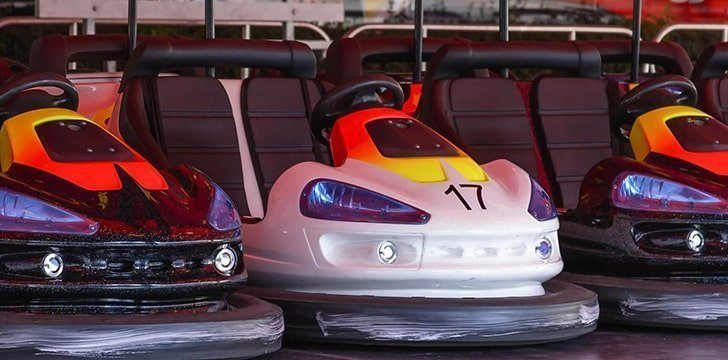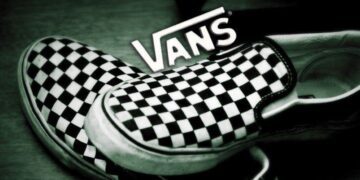I nearly killed a kid on the Dodgems once. No joke!
I was in a car with my kid sister, and there were two young kids who had stalled their car in front of us.
I slammed my foot down, my sister was screaming “Get ’em!!” like we were in some Mad Max movie and then BUMP!
The two kids clattered together with some mighty force. One of them thought this was hilarious.
The other one… well, he was in a great deal of pain, the poor little guy.
Me and my sister shot each other a guilty glance, drove away sharpish and left the kid to be fished out by the ride attendant and returned to his mother and his gigantic, hulking, angry-looking father.
I love Dodgems – a lot. However, I only just learnt why they’re called Dodgems. It’s really interesting, actually. You ready to find out?
Dodgems weren’t originally supposed to crash into each other.
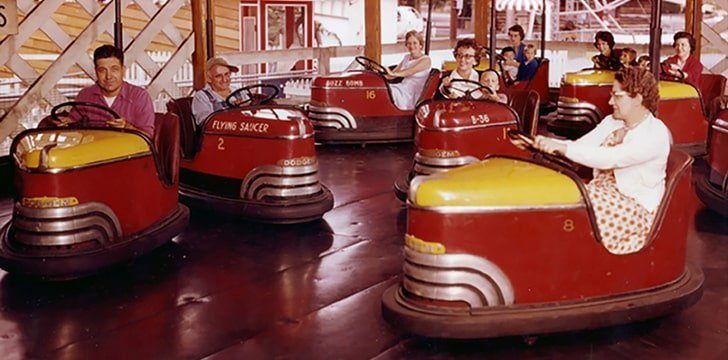
Now, trust me, I know what you’re thinking, that’s literally why they’re also called bumper cars!
But when they were first invented in 1920, the whole point of going on the bumper cars was to… well, not bump into other bumper cars – hence the name “Dodgems,” because you had to dodge ’em.
The Stoehrer brothers were the first dudes to put a patent on bumper cars and they called their company the Dodgem Company.
The thrill of the ride, back then, came from having to dodge your fellow riders best you could.
Bumper cars weren’t originally made for steering.
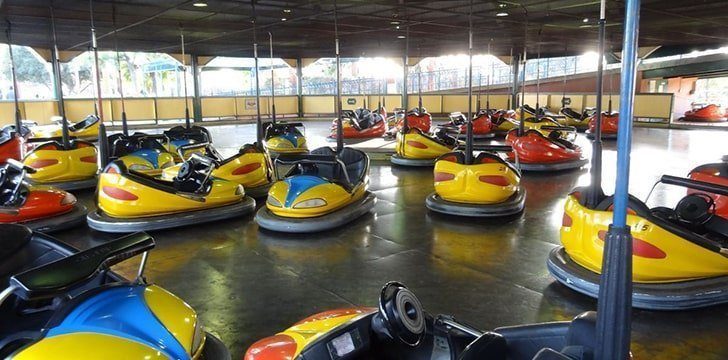
A fun factor of the original bumper cars was that their lack of steering capabilities would often send them swirling around the track.
This was down to the design and construction of the first bumper cars, which had a motor underneath the car that cut down the precision of the steering.
The lack of steering didn’t put people off, mind you. If anything, it made them hungry for more.
People who loved wild rides kept coming back to the Dodgems, thrilled by the unpredictability that the poor steering gave them.
They were a major health and safety hazard to start with.
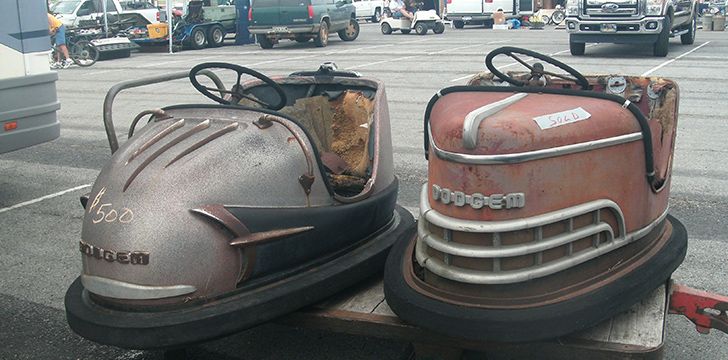
That might not come as some surprise given how I just said they weren’t supposed to bump into each other and they had practically barely any steering.
However, they were so flimsy they would often fall to pieces after a single collision.
Cars that got broadsided would often not be able to start up again, and sometimes occupants or pieces of the car would go flying after a bump.
The flimsy tin construction of the Dodgems also meant that they would dent with a single kick, let alone a knock from another car.
As such, hammering dents out of the body’s tin panels became a nightly practice for fairground workers, as did nailing back all the loose or missing panels.
After the Dodgems’ very first season, every last one of the cars had to be burnt as they were too far past the point of repair.
In one place in Russia, bumping cars would get you kicked off.
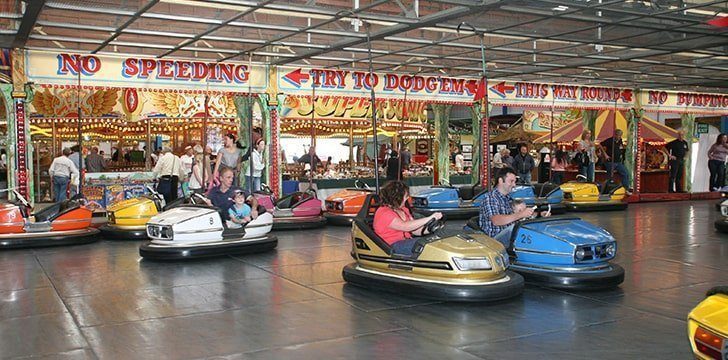
Back in the day when Dodgems first started going global, it was still very much the norm to not bump into others cars.
Also, back then, grown-ups went on one set of dodgems, kids on another.
It’s understandable that the kids would bump each other once a while, so there was rarely ever a penalty for kids’ collisions.
However, adults would often be told off by fairground owners.
One example of this being taken to a crazy extreme was in Russia, where adults on the bumper cars at one fun fair were kicked off if they collided with another car.
Bumper cars were a really big success. Like, a reeeeeeeeeeeally big success.
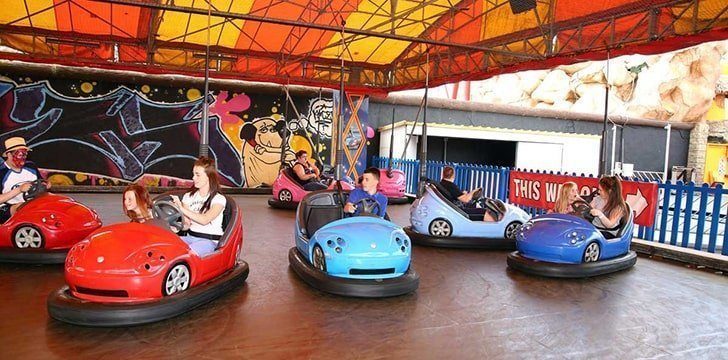
Initial reviews of the Dodgems described them as being “unmanageable” due to their lack of steering.
However in their first season, the Stoehrer brothers reported crowds of 40 – 50 people consistently waiting for a go at the Dodgems – and that’s after they’d doubled the price per ride from 15 cents to 30 cents!
Crowds were a regular occurrence for the Dodgems throughout the whole summer, and the Dodgem Company managed to thrive over many summers before a next gen bumper car design came about and took over the industry.
